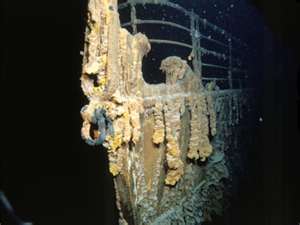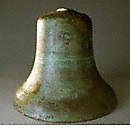Titanic: Rediscovered, Still Holding Secrets
The giant ocean liner Titanic, which sank on April 15, 1912, was presumed lost for several decades but was eventually discovered in 1985. Since that discovery, several expeditions have brought back artifacts and images galore from the wreckage on the Atlantic Ocean floor.
Initial theories were that the boat sank intact. What Ballard and his team saw, however, contradicted that: They saw a ship that had split in two. The bow rested 1,970 feet from the stern, and the two parts faced in opposite directions. The bow was found to be embedded 60 feet into the ocean floor. The stern was found to be more damaged, likely due to an implosion caused by release on impact of air trapped in the decks. Film director and adventurer James Cameron, who directed the 1997 hit Titanic, also produced a 2003 documentary titled Ghosts of the Abyss, which featured new footage of the ship from the ocean floor. Private expeditions, though costing tens of thousands of dollars, are routine. |
|
Social Studies for Kids
copyright 2002–2025
David White



 On September 1, 1985, a team of French and American explorers discovered the wreck. One of the team was Dr. Robert Ballard, a famed underwater explorer who returned the following year in the one-man submersible Alvin and gained further evidence of what happened when the boat sank.
On September 1, 1985, a team of French and American explorers discovered the wreck. One of the team was Dr. Robert Ballard, a famed underwater explorer who returned the following year in the one-man submersible Alvin and gained further evidence of what happened when the boat sank.  Ballard didn't bring back any artifacts, but other expeditions did. More than 6,000 mementoes now rest in the hands of public and private collectors, most notably the National Maritime Museum in Greenwich, England.
Ballard didn't bring back any artifacts, but other expeditions did. More than 6,000 mementoes now rest in the hands of public and private collectors, most notably the National Maritime Museum in Greenwich, England.
